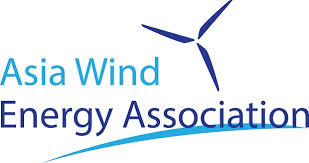Windmill energy is a great way to generate energy from the wind. These turbines are relatively cheap and can supply energy to a number of homes. The costs of installing individual turbines or a wind farm can be expensive, but the benefits outweigh the costs. Another plus is that wind is a free fuel, and windmills require little maintenance. They can be located anywhere and are easy to operate. You can purchase energy from service organizations that install windmills.
Cost
Many people wonder about the cost of windmill energy. The cost of windmills is not economically justified when compared with the costs of natural gas. Although natural gas prices are low, they are not competitive with wind farms. However, there are ways to reduce costs. Here are a few tips:
In some regions with low wind speeds, wind power would make up a larger percentage of total electricity generation. In northern parts of Russia, eastern and central China, and central and northern Europe, the share of wind power would be greater than 50%. In the US, wind power would cover around 30% of total energy demand. By contrast, in countries with low sunshine, it would cover a little more than half of the total energy demand. In the latter two areas, wind power would cover about three-quarters of the energy demand.
One thing to keep in mind is that costs for windmill energy are not reflected in the cost of transmission lines. The costs of building these lines are spread across the entire customer base. Thus, a billion-dollar investment in a transmission line in New England would cost anywhere from $19 billion to $25 billion. These costs are often not directly reflected in cost comparisons and are ultimately paid for by the taxpayers and consumers. In some cases, there are no low-cost alternatives to windmill energy.
Space
The benefits of windmill energy in space have been long understood, but recent developments have made it possible to take this renewable source into orbit. For instance, a French company has developed a portable instrument to measure the direction and speed of wind. The instrument is similar to the ‘lidar’ technology used by ESA’s Aeolus satellite to map wind profiles around the world. The first commercially available windmills for space use are expected to launch by 2035.
The concept of space-based solar power is attractive for several reasons. For example, it avoids the high initial investment in fixed infrastructures and can operate independently. Furthermore, the system can harness sunlight and transmit it through the atmosphere. Such features make it appealing to those who are looking for large-scale solutions to environmental problems, such as climate change and fossil fuel depletion. Moreover, space-based solar power satellites require no initial investment in fixed infrastructure, such as solar panels or windmills.
Environmental impact
A review conducted by a committee of government agencies has identified a number of key areas that need further investigation. The report focuses on the potential environmental benefits of wind energy, focusing on the reduction of air pollutants. It does not, however, identify specific windmill projects or methods for assessing them. It does, however, offer a guide to the methods and data needed to conduct a comprehensive assessment. Here are some of the key areas the committee deemed particularly important:
The construction of offshore wind farms and offshore installations may have a variety of adverse environmental impacts. These impacts are typically less severe than those caused by conventional energies, but they must still be assessed to ensure that they are being managed accordingly. Moreover, offshore wind projects involve the installation of undersea cables, which can cause adverse impacts on marine life, particularly endangered whales. In addition, windmill energy projects can impact the distribution and abundance of benthic organisms and affect the environment as a whole.
Job opportunities
As the renewable energy industry becomes more mandated, the job opportunities for windmill technicians will likely grow. The wind turbines are made up of hundreds of parts, and job opportunities for these technicians will grow along with that. These workers also assemble and transport wind turbines to build sites. This type of work will usually require technical school education or an associate’s degree.
A career in wind power has many job opportunities in Australia. There are positions in almost every State, and these opportunities cover a diverse range of occupations from installers to removalists. According to a recent report from the Wind Energy Association, some of the top occupations in the wind-power industry include manufacturing, project development, and operation and maintenance. Windmill energy projects often require support staff, which means job opportunities are available for anyone who is interested in the industry.




